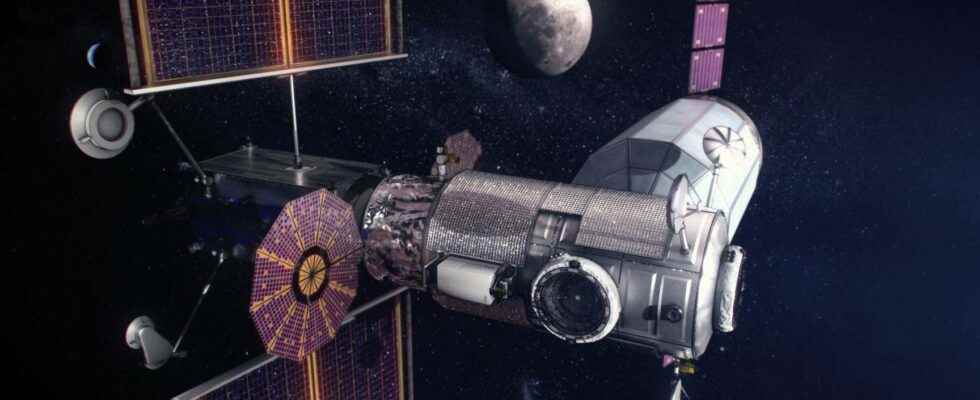As part of Nasa’s Gateway project to install a space station in orbit between the Moon and Earth, the American Space Agency has just launched its CubeSat Capstone to experiment with a new unique orbit.
In a context of lunar conquest, aiming to establish a permanent human presence on the surface of our natural satellite via the program Artemis from NASA, the US Space Agency plans to deploy Gatewaya small space station serving as a base for future manned missions to the Moon and Mars. One of its particularities is that it will not orbit around the Moon, nor around the Earth, but at the level of a Lagrange point, where the gravitational attractions of the Earth and the Moon compensate each other. Here, the station will adopt a “nearly rectilinear halo orbit” (NRHO), a complex trajectory that will bring it nearly 1,500 kilometers from the lunar North Pole every seven days. With such an orbit, the crew present in the station will be able to simultaneously observe the Earth as well as the far side of the moon : a trip between the Earth and the Moon will be highly simplified, and communications between our Planet and our satellite will be much faster.
A CubeSat as a guinea pig?
Although the NRHO orbit seems perfect for the Artemis program, it has only been experienced before through simulations. In order to minimize the risks of this multi-billion dollar mission, NASA opted to launch an experimental probe, developed by the company Advanced Space. The CubeSat capstone (Cislunar Autonomous Positioning System Technology Operations and Navigation Experiment)the size of a microwave ovenwas therefore launched on June 28 aboard the electron rocket of RocketLab from their base in New Zealand, to verify the calculated and predicted orbital stability for the space station Gateway.
NASA’s Youtube channel offers a replay of the launch of Capstone. © NASA, YouTube
The satellite will also experiment with a new communications and navigation system, which will measure the probe’s position relative to the probe. Lunar Recon Orbit (LRO), without depending on Earth-based stations.
Note: it is possible to follow the evolution of the probe via interactive visualization Eyes on the Solar System developed by NASA.
Reading ideas for the summer with Futura?
To celebrate the start of the holidays, we offer you the Mag Futura at the preferential price of 15 € instead of 19 €, i.e. a reduction of 20% !
What is Mag Futura?
- Our first paper journal of more than 200 pages to make science accessible to as many people as possible
- 4 major scientific questions for 2022, from the Earth to the Moon
- Home delivery*
*Special offer valid until July 19. Delivery is made in France (excluding metropolitan France), Switzerland, Belgium.
Interested in what you just read?
